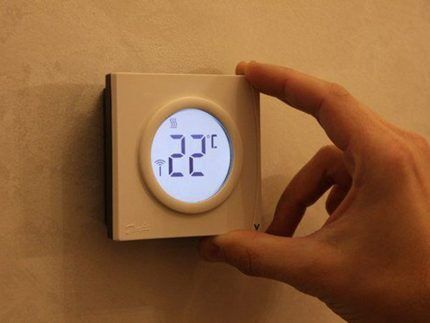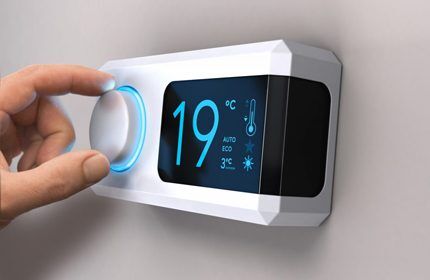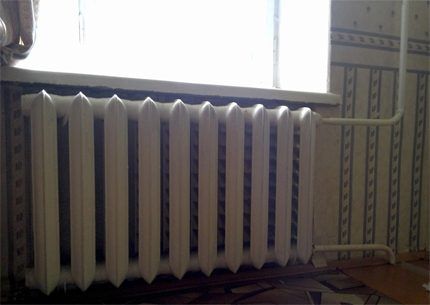Heating in a smart home: structure and principle of operation + tips for organizing a smart system
The term “smart home”, which recently surprised society, is quite commonplace today.Actually, if we consider the level of household appliances used in almost every home, we can draw an unambiguous conclusion - the degree of automation is very high.
It is not surprising that auto control has also affected heating in a smart home, which has become significantly smarter thanks to innovations. Let's take a closer look at this option in order to get to know the device and all the advantages of smart heating.
The content of the article:
Smart heating system strategy
There is no need to talk once again about how controversial the issue of heating residential premises is. It is directly related to the costs of energy consumption and these costs significantly burden the family budget.
Therefore, the smart heating strategy is a really important and worthwhile topic to not only consider, but also try to implement.

If you apply smart home strategy to the heating system in its entirety, there is every chance to significantly reduce costs. Precise control of consumption and rational distribution of heat resources will contribute to savings.
The smart home strategy in relation to the heating system has been calculated and tested in practice. The result promises widespread adoption of this approach.
Options for implementing smart heat supply
Actually, the principle is obvious - constructing a heating circuit diagram taking into account the introduction of control sensors, as well as actuators at energy distribution points.

The control sensors and mechanics, in turn, are connected to the lines of a controller equipped with control software.
In principle, everything is simple, given the development of monitoring and control technologies through controllers.

When considering possible scheme options, of course, one should take into account their application depending on the type of housing and its location.
Traditionally there are two options:
- Urban sector.
- Suburban sector.
The heat supply systems for these two options are somewhat different, because in urban environments, centralized heat supply is increasingly taking priority.
The suburban sector is characterized by an autonomous type heating system. Therefore, the “smart” heating solution for these two options may differ.
Solution #1 - for a city apartment
Let's consider a possible “smart” heat supply scheme in relation to the residential urban sector. Nowadays, the majority of urban infrastructure is already partially automated.
As a rule, there are coolant control systems in each individual apartment building. What remains for the owner of an individual apartment to do?

Inside one specific apartment of an apartment building, you can use an automated control system taking into account heat consumption. However, the general (house) distribution scheme of the coolant is important.
If this scheme has a sequential nature of switching on devices, individual metering of energy consumption will not be possible, as well as separate adjustment.

The parallel connection of heating devices allows you to control consumption and keep records. This is done using the installation temperature sensors, regulators and controller.

Temperature sensors are installed directly on the supply and return water lines, plus an indoor temperature sensor will be required.
Mounted on the return pipeline of heating devices control valves. All these devices are combined with a management controller.
Solution #2 - for a country house
The solution for a country or city private autonomous house is characterized by unlimited possibilities.
Autonomous private households, as a rule, operate on their own heat supply system, for example, from a boiler.In this option, automation is easier in terms of independence, but from a technical point of view it is somewhat more difficult.

The complexity is due to the use of automation and control not only to home heating devices, but also directly to the heat source - the boiler.
The proposed designs of modern boiler equipment support full automation, including:
- fuel loading;
- combustion intensity;
- media circulation;
- temperature limits;
- active action timer.
If a device of this particular configuration is used, it is enough to coordinate the indoor heating control system of a smart home with the boiler equipment controller. In another case, if there are design features of the boiler, you will have to initially automate the boiler installation.
Then, for example, the set temperature value on a sensor located indoors will serve as an additional reference point for the boiler controller.
Based on this guideline, fuel consumption, combustion intensity and other operations of boiler equipment will be carried out.

However, it is permissible to create different temperature conditions in each individual room, provided that acceptable sealing of one room from another is ensured.
In this option, the heat flow is additionally regulated with the help of individual thermostats and regulators that control the flow of coolant through devices (batteries, underfloor heating system).
Benefits of full heating automation
Before discussing the benefits of smart heating, there is something of an initial disadvantage for the end user.
When setting up a system of this kind, you will have to spend money on purchasing the required components, as well as on installation and configuration.

Of course, the possibility of doing everything yourself cannot be ruled out. However, to implement this option, you must have the status of a highly qualified specialist or a jack of all trades. But the costs of setting up the system are ultimately compensated in full.
Average statistical calculations showed up to 30% savings in heating costs during the cold season. Thus, the “smart” heating device pays for itself in the short term.
Among the obvious advantages of the technology is the ability to control all parameters directly from your phone or tablet.
Modern smartphones allow the installation of special applications through which monitoring and adjusting the parameters of the heating system is carried out.

An obvious advantage of such systems is the factor of accurate and stable temperature background.
Moreover, using the application, you can set the desired mode at a certain time of the day: cooler at night for a restful sleep, and a gradual increase in temperature an hour before returning from work.
When the inside of the room is “not cold - not hot,” that is, the temperature background that is optimal for the body is noted, the risk of colds is sharply reduced. In such conditions, the body is in an active phase, the person feels a state of comfort.
The convenience factor is also an advantage. There is no need to turn the taps or measure the temperature with a thermometer. All these actions will be performed automatically with high accuracy. In addition, it becomes possible to take into account the energy consumed. And this, again, is savings.
Features of the arrangement of “smart” heating
The most important thing that can be classified as recommendations for installing thermal systems in a smart home is the use of high-quality control equipment, as well as reliable filters.
Effective filtration of the coolant flow and the use of reliable adjustment mechanisms contribute to the accurate and flawless operation of the system.

Automated modules based on controllers provide a high degree of sensitivity and allow you to regulate processes with an accuracy of up to one percent.
However, in the absence of filter modules, the operation of the flow regulators may be disrupted after only a short period of operation.
It is recommended to technically correctly calculate and select the installation points of thermostats (sensors), since the correctly chosen installation location allows you to achieve the maximum effect of regulation as a whole. Information on effective placement points can always be found in the device data sheet.
Conclusions and useful video on the topic
The following video offers a rather interesting option for introducing automation of the heating system:
Technology moves society forward. The level of comfort and convenience increases. A striking example of this is the heating system of a private house or apartment, endowed with the functions of full process control without human intervention. The user only needs to determine the level of comfort to get the desired microclimate throughout the house and, in addition, substantial savings.
If you have valuable information on arranging heating in a smart home system, please share it with our readers. Leave your comments and ask questions in the block below the article.



